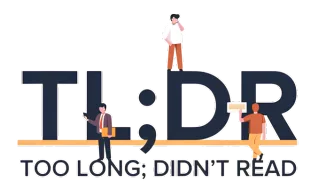Sometimes, even the most innovative projects need a fresh start. Akash Network, a name many of you know for its decentralized compute power, just announced a big one. Its founder, Greg Osuri, shared plans to move Akash from its current home. The project will deprecate its Cosmos SDK-based chain. It will then begin a public search for a new network to call home.
- Akash Network is planning a significant migration, moving away from its current Cosmos SDK-based chain to a new, yet-to-be-determined network.
- The project seeks a new home that offers strong security, a high-quality community, deep liquidity, and exciting growth, while maintaining IBC compatibility.
- This strategic move aims to address scalability and security needs driven by the rapidly increasing demand for AI compute and the growth of the DePIN sector.
This isn’t a small tweak. It is a fundamental shift for a project that has made waves in the decentralized physical infrastructure (DePIN) space. Osuri explained that Akash needs a network that can “secure Akash.” This means a new foundation, one chosen after a careful look at options both inside and outside the Cosmos ecosystem.
The destination chain remains unnamed for now. Osuri laid out the wish list in an X post. The team seeks “strong security, a high-quality community, deep liquidity and exciting growth.” He also made it clear the new home must remain IBC-compatible. This ensures it can still talk to other blockchains in the Cosmos family, keeping those vital connections alive.
For those unfamiliar, Akash runs a marketplace. It connects buyers of GPU and compute capacity with independent providers. Think of it as an Airbnb for server power. Need to train an AI model? Akash helps you find the hardware. In 2023, the network added Nvidia GPUs with its Mainnet 6 upgrade. This offered a more cost-effective alternative to centralized cloud services.
Keeping existing integrations matters a lot. Osuri noted that preserving tools like Osmosis and Keplr would keep user workflows smooth. Nobody wants to relearn everything, do they? A formal Request for Proposal (RFP) will go out soon. This invites various foundations to present their networks as potential new homes for Akash.
Some users naturally worried about staking. Staking is how many crypto holders earn rewards by locking up their tokens to support network operations. Osuri addressed this directly. He said that while staking “may seem like [it’s] disappearing from Akash, it’s actually evolving into something superior.” This hints at new ways to secure the network, perhaps moving beyond traditional consensus models.
Among the potential candidates, Osuri mentioned Solana as a “strong contender.” He quickly added that the team will be “extra prudent” in their choice. Changing a base layer is a massive architectural undertaking for any DePIN network. It is like rebuilding the foundation of a skyscraper while people are still living inside.
The Search for Scalability and Security
Osuri’s criteria—security, liquidity, and community—point to a larger goal. Akash is looking for scalable settlement and distribution. Demand for AI compute on blockchains is rising fast. The current setup might not be enough for what’s coming next. It’s a sign that even successful projects need to adapt to rapid growth.
The DePIN sector itself is a multi-billion-dollar asset class. It covers everything from compute and storage to wireless networks. The Block Research’s DePin Report 2025 shines a light on this. It highlights web3 cloud and AI compute as leading segments. This is exactly where Akash plays a big role.
But the report also flags some persistent challenges. Hardware access can be tricky. Network scalability remains a hurdle. Cross-border regulatory uncertainty adds another layer of complexity. The study concludes that interoperability and reliable throughput will decide which networks become the go-to rails for decentralized applications and real-world tasks.
Akash’s move reflects these wider industry trends. It is a strategic decision to position itself for future growth. The project needs a network that can handle increasing demand. It needs one that offers the best possible environment for its decentralized marketplace to thrive.
The process for this migration will be public. Osuri promised a community-driven approach. Trade-offs will be debated openly before any final decision. This transparency is a hallmark of many decentralized projects. It allows the community to participate in major strategic choices.
What Comes Next for Akash
No timeline has been set for the migration. This suggests a careful, deliberate approach. Rushing such a significant change would be unwise. The team will take its time to evaluate all options. They will weigh the pros and cons of each potential network.
This move could set a precedent for other DePIN projects. As the sector grows, many might face similar scaling and security questions. Akash’s journey will offer valuable lessons. It shows how even established decentralized networks must evolve to meet new demands.
The crypto space never stands still, does it? Akash’s search for a new home is a testament to that. It is a bold step, one that could redefine its future. We will be watching closely to see where this decentralized compute giant decides to plant its new roots.

















